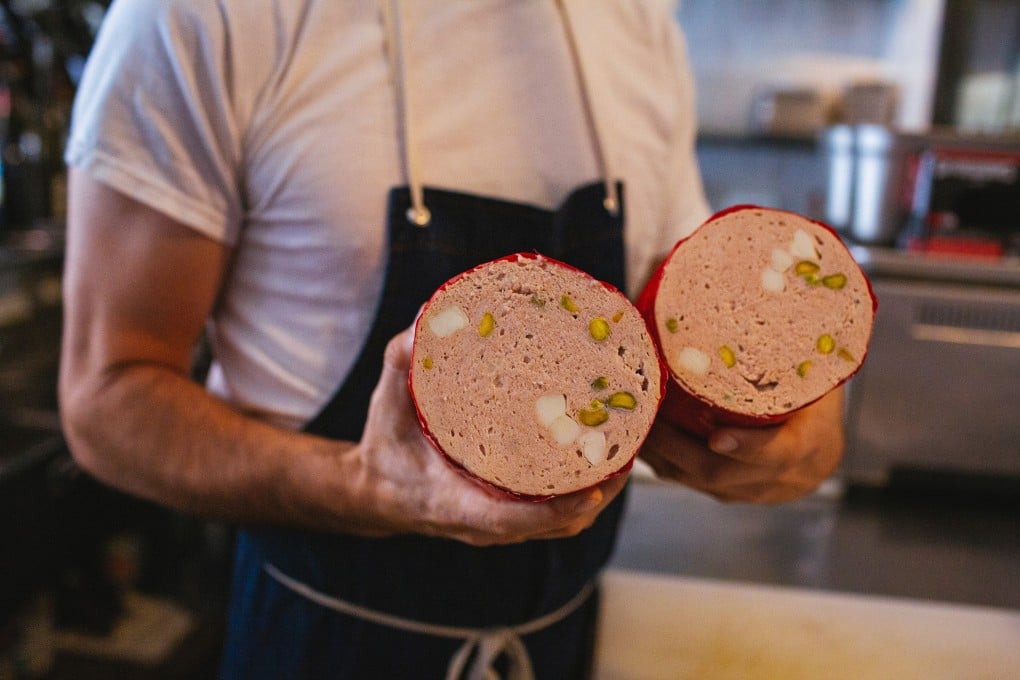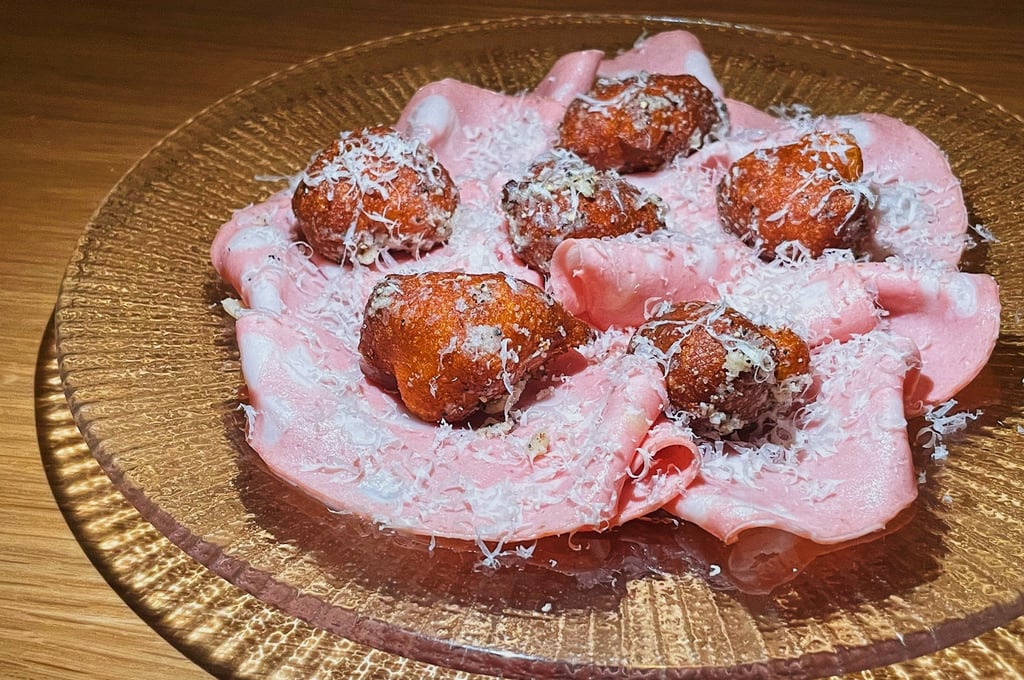Don’t say bologna: why mortadella, an Italian deli favourite, is trending in the US, and the chefs who make their own versions of the sausage
- Often seen on cold meat platters and in deli sandwiches, mortadella has a long history, possibly dating back to the Ancient Romans or even before
- Chefs in Los Angeles, who often make their own mortadella, talk about how they like to serve the deli favourite and put their own twist on it

Thin slices of white-speckled pink mortadella are popping up in sandwiches, on charcuterie plates and even in the occasional cocktail in Los Angeles, but it’s hard to view any food item depicted in ancient Roman carvings as a flash in the pan.
The Italian deli meat that traces its roots to Bologna and maybe as far back as the Etruscans isn’t new, but it’s been gaining the kind of star power that salami and prosciutto have hogged for too long in the United States, where a maligned derivative, bologna, lacks the nuance in texture and flavour of its inspiration.
At Grandmaster Recorders restaurant and bar in Los Angeles, the aromatic deli meat is draped around hot, freshly fried cacio e pepe-flavoured zeppole (doughnuts) buried under freshly grated pecorino. At Pizzeria Bianco, it is served on a round of focaccia with goat cheese and arugula, while La Sorted’s showcases the thin slices on even fluffier focaccia with burrata and a slick of slightly sweet pistachio cream.
It’s served as an option on the cured meat plate at Capri Club, a new addition to the best bars in LA Cocktail bar Thunderbolt recently experimented with a mortadella-washed bourbon old-fashioned

A blend of pork cuts and fat, originally ground together in a mortar in Italy’s Emilia-Romagna region, mortadella is essentially a large cooked pork sausage spiced with myrtle, garlic and pepper. In 1998, it received its own Protected Geographical Indication (PGI) – meaning its ingredients and methods must adhere to a strict set of criteria to be considered authentic.